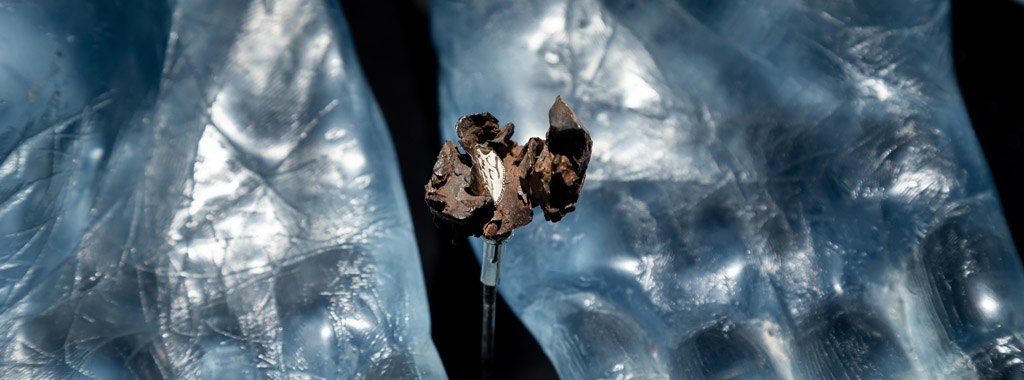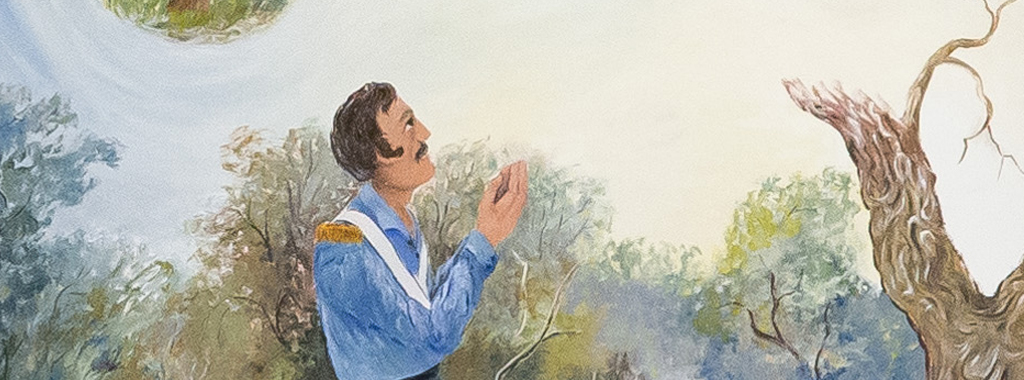The word ‘otumpa’ comes from the Chiriguano term ‘motumpa’, meaning to ‘apotheosise, divinise or deify’. This was the Chiriguanos’ name for a flat plain with tangled vegetation that was difficult to penetrate, and also for a geological formation concealing such a place: a pit possibly generated by the impact of an extra-terrestrial object. Beginning in the sixteenth century, several Spanish expeditions ventured into the interior of this otumpa in search of a huge mass of iron that had descended from the sky thousands of years before. The object, known as the ‘Meteorito de Otumpa’ (Otumpa Meteorite) or ‘Mesón de Fierro’ (Big Iron Table) became the most famous of the thousands of extra-terrestrial rocks to have bombarded Campo de Cielo, in the Chaco Austral (Southern Chaco) of north-eastern Argentina. The mythical aura surrounding El Mesón grew when it became an intraterrestrial treasure, disappeared since 1783.
Since the project ‘Una guía a Campo del Cielo’ [A Guide to Campo del Cielo] got under way in 2006, Faivovich & Goldberg have been searching for the lost meteorite. The exhibition Otumpa presents a series of works that inhabit a context beyond the present. When one crosses the biodiverse bushland of the Chaco – laid waste by monoculture à la mode – a space of reflection emerges: at one end, the meteorite resurfaces as a monumental painting, its immaterial image floating in the void at actual size; at the other end, a small 19-gram specimen from a natural history museum collection are the only material remains that today can be attributed to the Mesón. After being identified by Faivovich & Goldberg in 2019, this fragment returns for the first time to the region where it landed.
These works are joined by a new discovery emerging from the artists’ research process: two paintings from the Sanctuary of the Virgin of the Lake (Mesón de Fierro). Created by Lilly Zollinger de Escribanich (Chaco, 1928–2017), these paintings expand the imaginary around the cosmic event and its landscape and, at the same time, draw together moments from its eventful history.
Otumpa, Faivovich & Goldberg’s first solo exhibition in a Buenos Aires museum, suggests a space for us to join together with an image of what is amongst us yet absent. Rather than being nowhere, that which has disappeared could be found all around us.
Artists: Guillermo Faivovich and Nicolás Goldberg
Curated by: Javier Villa
Production: Edgar Lacombe and María Venancio
With support from: Austrian Embassy and the Natural History Museum Vienna
Guillermo Faivovich (Buenos Aires, 1977) and Nicolás Goldberg (Paris, 1978) For over a decade, the art duo Guillermo Faivovich and Nicolás Goldberg has been carrying out extensive research into Campo del Cielo, a border region between the Argentinian provinces of Chaco and Santiago del Estero, where a meteorite shower landed some 4,000 years ago. The result of this ever-expanding initiative is a body of work that analyses the particularities of an exceptional event and casts light on the dynamics between certain cosmic objects and their complex political existences. Through in-depth archival research, forensic cultural anthropology and systemic narratology, Faivovich and Goldberg review the burden of testimony contained in Campo del Cielo and its ramifications. Their work explores matter as a canvas on which events leave their mark through time, and the methodologies developed by human knowledge to interpret the history of these objects which, arriving from outer space, are now part of Planet Earth.
Recent projects by Faivovich and Goldberg include: Saxa Loquuntur! (Galería Barro, 2022); Encuentro con El Mataco [Meeting with El Mataco] (Museo Histórico Provincial de Rosario Julio Marc, 2019); Mesón de Fierro: Towards the XXII Century (United Nations, Vienna, 2019); En busca del Mesón de Fierro [In Search of Mesón de Fierro] (Naturhistorisches Museum, Vienna, 2018); and Decomiso [Seizure] (ASU Art Museum, Arizona, 2018). They have taken part in lecture programmes at: the Universidad Di Tella, Buenos Aires (2018); the Thyssen-Bornemisza Art Contemporary (Vienna, 2017), the Museo de Arte Latinoamericano de Buenos Aires (Malba) (2017), the Dia Art Foundation (New York, 2013); and the Massachusetts Institute of Technology (MIT), Cambridge (2011). They live and work in Buenos Aires.




